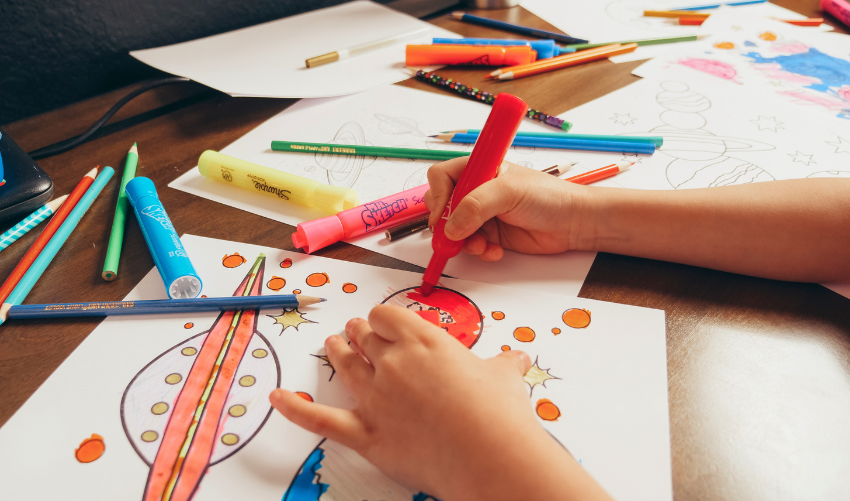Have you ever picked up a liquid toy and wondered what’s really inside?
Many parents are curious about the safety of these colorful, squishy playthings. Are they filled with harmful chemicals? Can they pose a risk to your little ones? We’ll dive deep into the contents of liquid toys and uncover the truth about their safety.
Understanding Different Types Of Liquid-filled Toys
These toys often attract children due to their colorful designs and interesting textures. However, safety concerns arise from their contents. Knowing what’s inside helps determine if these toys are suitable for kids.
Popular Liquid-filled Toy Categories
Liquid-filled toys come in several popular categories. Each type has its unique appeal and purpose. Here are the main types:
- Squishy Toys: These toys are soft and fun to squeeze. They often contain gel, foam, or water beads. Children love their tactile feel.
- Stress Balls: Designed to relieve stress, these balls are filled with gel, foam, or small particles. They provide a satisfying squeeze.
- Sensory Bags: These are bags filled with liquids, glitter, and small objects. They offer a sensory experience that can calm or entertain children.
These categories highlight the variety available. Each type serves a purpose and can be fun for children.
Common Fillings Found Inside
The fillings inside liquid-filled toys play a significant role in their safety and appeal. Here are common types:
- Water & Glycerin: These are frequent fillings. They are generally non-toxic and safe for kids.
- Mineral Oil & Gel: These materials create a unique tactile sensation. They can be fun and soothing for children.
- Water Beads: Made from super-absorbent polymers, these beads expand in water. They provide a squishy feel.
These fillings contribute to the enjoyment of liquid-filled toys. Parents should always check for safety warnings and supervise playtime.

Potential Risks Associated With Liquid Toy Fillings
Understanding the potential risks associated with liquid toy fillings is crucial. While they may look harmless, some fillings contain undisclosed chemicals that can pose health risks.
What Makes Some Fillings Concerning
Many liquid toys contain various fillings that raise safety concerns. Some of these fillings include:
- Undisclosed Chemicals: Manufacturers may not list all ingredients.
- Non-compliant Substances: Some toys might contain banned or harmful materials.
- Fragrances & Dyes: These can cause allergic reactions and skin irritation.
- Borax: Found in some slimes, it can irritate if ingested.
These factors contribute to the risk of using liquid toys. Awareness is essential for parents. Understanding the contents can help in making informed decisions.
Hazards From Ingestion Or Contact
Liquid toys can present serious hazards if ingested or touched. The risks include:
- Choking Hazard: Water beads can expand and block airways.
- Digestive Issues: Ingesting non-food liquids can lead to nausea and vomiting.
- Skin Irritation: Chemicals or dyes in toys might cause rashes.
Parents should watch for these symptoms:
- Nausea
- Vomiting
- Rashes or irritation on the skin
It is crucial to supervise children while playing with these toys. Always check for safety labels. If a toy seems suspicious, it is better to avoid it. Safety comes first.
Ensuring The Safety Of Liquid Toys
Understanding the materials used and how to ensure safety is crucial. Here, we explore how to buy safe liquid toys and the importance of supervising playtime.
Buying Safe Liquid Toys
Choosing safe liquid toys is essential for your child’s well-being. Here are some key points to consider:
- Check for Certifications: Look for toys that meet ASTM F963 (US) and EN71 (EU) standards.
- Reputable Brands: Purchase from known manufacturers with good safety records.
- Read Labels: Always check for clear ingredient lists and age recommendations.
- Age Appropriateness: Ensure the toy is suitable for your child’s age.
Conduct regular inspections of liquid toys. Look for any signs of damage. Punctures or leaks can pose risks to children. If you find any issues, take action:
- Immediate Cleanup: Clean any leaks right away.
- Dispose of Damaged Toys: Safely discard toys that are no longer intact.
Buying safe liquid toys involves careful choices. Stay informed and vigilant. It protects your child while they enjoy their playtime.

Supervising Playtime
Supervision is crucial when kids play with liquid toys. Always keep an eye on them during play. Liquid toys can be fun, but they can also lead to messes or accidents. Here are some tips for effective supervision:
- Set Rules: Establish clear play rules for safety.
- Choose Safe Locations: Play in areas that are easy to clean.
- Teach Proper Use: Show children how to use toys safely.
Pay attention to how children interact with their toys. Watch for:
| Signs to Watch For | Action to Take |
|---|---|
| Playing roughly | Intervene and explain gentle play |
| Putting toys in their mouths | Remind them to avoid this |
| Leaks or spills | Clean immediately to avoid slipping |
Supervising playtime helps prevent accidents. It allows children to enjoy their toys safely. Stay engaged and keep the fun going without risks.
What To Do If A Liquid Toy Bursts
Liquid toys can be fun and colorful. However, they can also pose risks. What happens when a liquid toy bursts? Understanding how to handle such situations is crucial for safety.
First Aid For Exposure
In case of exposure to the liquid from a burst toy, take immediate action. Different types of contact require different responses. Here are steps to follow based on the type of exposure:
- Skin Contact: Wash affected skin thoroughly with soap and water. This helps remove any harmful substances.
- Eye Contact: Rinse eyes immediately with plenty of clean water. Keep rinsing for at least 15 minutes. Seek medical help if irritation continues.
- Ingestion: DO NOT induce vomiting. Give water if the child is awake and alert. Seek medical advice if symptoms appear.
It is important to check for persistent symptoms after exposure. These may include:
| Symptom | Action |
|---|---|
| Irritation | Wash affected area and monitor. |
| Nausea | Keep the child calm and hydrated. |
| Vomiting | Contact a doctor for advice. |
| Breathing difficulties | Seek emergency help immediately. |
Always keep an eye on your child for any changes. Quick action can help prevent serious issues.
When To Seek Medical Attention
Some situations require immediate medical help. If there is a large exposure, it is crucial to act fast. This includes:
- Significant amount ingested
- Prolonged contact with skin
In cases of ingestion of an unknown substance, contact Poison Control or your doctor right away. They can provide the best guidance. Explain what happened and the substance involved. This information will help them assist you better.
Watch for any persistent symptoms. These might include:
- Irritation
- Nausea
- Vomiting
- Breathing difficulties
Do not wait for symptoms to worsen. Seek help if you notice any of these signs. Your child’s safety is the top priority.




Leave a Reply